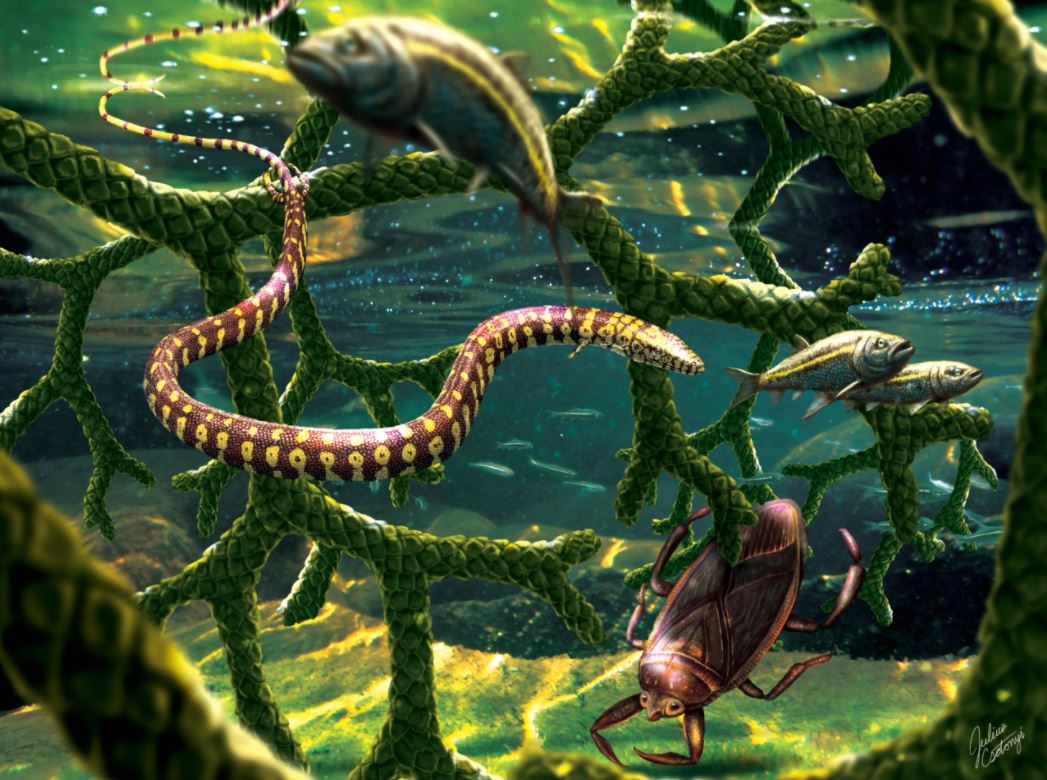
An international team of scientists have debunked an earlier description of a fossil thought to be the remarkable missing link between lizards and snakes.
The new study, including Professor Mike Lee and Dr Alessandro Palci from Flinders University and the South Australian Museum, found mischaracterisations of the anatomy and morphology of the fossil specimen - traits that initially seemed to be shared most closely with snakes.
"It has long been understood that snakes are members of a lineage of four-legged vertebrates that, as a result of evolutionary specialisations, lost their limbs," says lead author University of Alberta paleontologist Professor Michael Caldwell, who led efforts to re-examine the purported four-legged snake fossil first described in 2015 and named Tetrapodophis amplectus.
"The major conclusion of our team is that Tetrapodophis amplectus is not in fact a four-legged snake and was misclassified," Professor Calwell says. "Rather, all aspects of its anatomy are consistent with the anatomy observed in a group of extinct marine lizards from the Cretaceous period known as dolichosaurs."
The clues to this conclusion were hiding in the rock imprint left by the fossil where it was found in Brazil.
When the rock containing the original specimen discovery was split, the skeleton and skull ended up on opposite sides. As a result only the skull was described but not the natural mould, which preserved several features that make it clear that Tetrapodophis did not have the skull of a snake - not even of a primitive one, researchers conclude.
Snakes are a large and diverse group of limb-reduced lizards comprising about 3900 living species. Among many anatomical specialisations, most snakes completely lack front and rear limbs, although recent research led by Dr Palci showed a surprisingly large number retain vestiges of the pelvic girdle and even a femoral element, suggesting repeated evolutionary losses.
Because snakes are a lineage of lizards that have lost their legs, and Late Cretaceous snakes with rear limbs are now well known, it is reasonable to predict that earlier more primitive snakes with four legs would be found in the fossil record.
Although Tetrapodophis may not be the snake with four legs that paleontologists prize, it still has much to show us about evolution of squamate reptiles (lizards and snakes), says study co-author Dr Tiago Simões, a Brazilian paleontologist now a Harvard post-doctoral fellow.
"One of the greatest challenges of studying Tetrapodophis is that it is one of the smallest fossil squamates ever found," he says. "It is comparable to the smallest squamates alive today that also have reduced limbs."
The study, 'Tetrapodophis amplectus is not a snake: Reassessment of the osteology, phylogeny and functional morphology of an Early Cretaceous dolichosaurid lizard' 2021) by MW Caldwell, TR Simões, A Palcid, FF Garberoglio, RR Reisz, MSY Lee and RL Nydam has been published in the Journal of Systematic Palaeontology DOI: 10.1080/14772019.2021.1983044.






